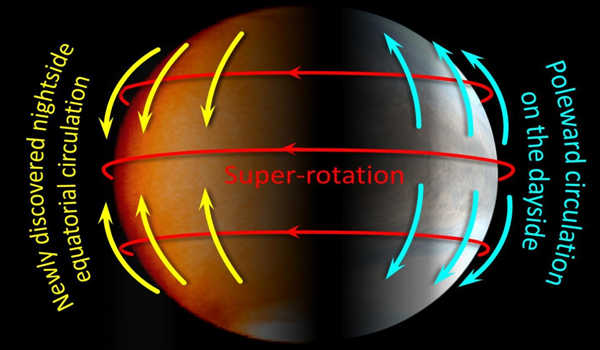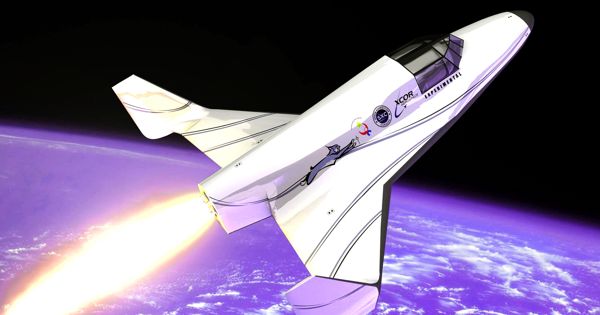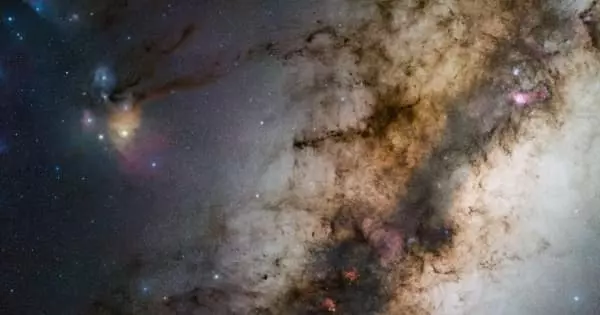The lack of sunlight makes imaging difficult, so little is known about the weather on Venus at night. Researchers have devised a method to use infrared sensors aboard the Venus orbiter Akatsuki to reveal the first details about our nearest neighbor’s nighttime weather. Their analytical methods could be applied to the study of other planets, including Mars and gas giants.
The lack of sunlight makes imaging difficult, so little is known about the weather on Venus at night. Researchers have devised a method to use infrared sensors aboard the Venus orbiter Akatsuki to reveal the first details about our nearest neighbor’s nighttime weather. Their analytical methods could be applied to the study of other planets, including Mars and gas giants. Furthermore, the study of Venusian weather made possible by their methods could help researchers learn more about the mechanisms that underpin Earth’s weather systems.
Researchers have devised a way to use infrared sensors on board the Venus orbiter Akatsuki to reveal the first details of the nighttime weather of our nearest neighbor.
The planets Earth and Venus have a lot in common. They are similar in size and mass, they are both in the same orbital region known as the habitable zone (which is thought to support liquid water and possibly life), they both have a solid surface, and they both have a narrow atmosphere with the weather. As a result, studying the weather on Venus can actually help researchers better understand the weather on Earth. To do so, researchers must observe cloud motion on Venus at various wavelengths of infrared light during the day and night.
Until now, however, only the weather on the daylight-facing side was easily accessible. Previously, some limited infrared observations of Venus’s nighttime weather were possible, but these were insufficient to paint a clear picture of the overall weather on Venus.
Enter the Akatsuki Venus Climate Orbiter. It is the first Japanese probe to orbit another planet, having been launched in 2010. Its mission is to use a variety of onboard instruments to observe Venus and its weather system. Akatsuki was carrying an infrared imager, which does not require sunlight to see. However, even this cannot directly resolve details on the nightside of Venus, but it did give researchers the data they needed to see things indirectly.

“Small-scale cloud patterns in the direct images are faint and frequently indistinguishable from background noise,” said Professor Takeshi Imamura from the Graduate School of Frontier Sciences at the University of Tokyo.
“We had to muffle the noise in order to see the details. It is common in astronomy and planetary science to combine images to accomplish this, as real features within a stack of similar images quickly hide the noise. However, because the entire weather system on Venus rotates very quickly, we had to compensate for this movement, known as super-rotation, in order to highlight interesting formations for study. Kiichi Fukuya, a graduate student, devised a method to overcome this difficulty.”
Super-rotation is an important meteorological phenomenon that, thankfully, does not occur on Earth. It is the ferocious east-west circulation of the entire weather system around the planet’s equator, and it dwarfs any extreme winds we might encounter here on Earth. Imamura and his colleagues are investigating the mechanisms that support this super-rotation and believe that characteristics of Venusian weather at night may help explain it.
“We can now see the north-south winds, also known as meridional circulation, at night. Surprisingly, they run in the opposite direction as their daytime counterparts “Imamura stated. “Such a dramatic shift cannot occur without significant ramifications. This observation may aid in the development of more accurate models of the Venusian weather system, thereby resolving some long-standing, unanswered questions about Venusian weather and, most likely, Earth weather as well.”
NASA recently announced two new missions to explore Venus, dubbed DaVinci+ and Veritas, while the European Space Agency also announced a new Venus mission, dubbed EnVision. Imamura and his team hope that by combining their observations with Akatsuki’s, they will soon be able to explore the Venusian climate not only in its current form but also throughout its geological history.
















